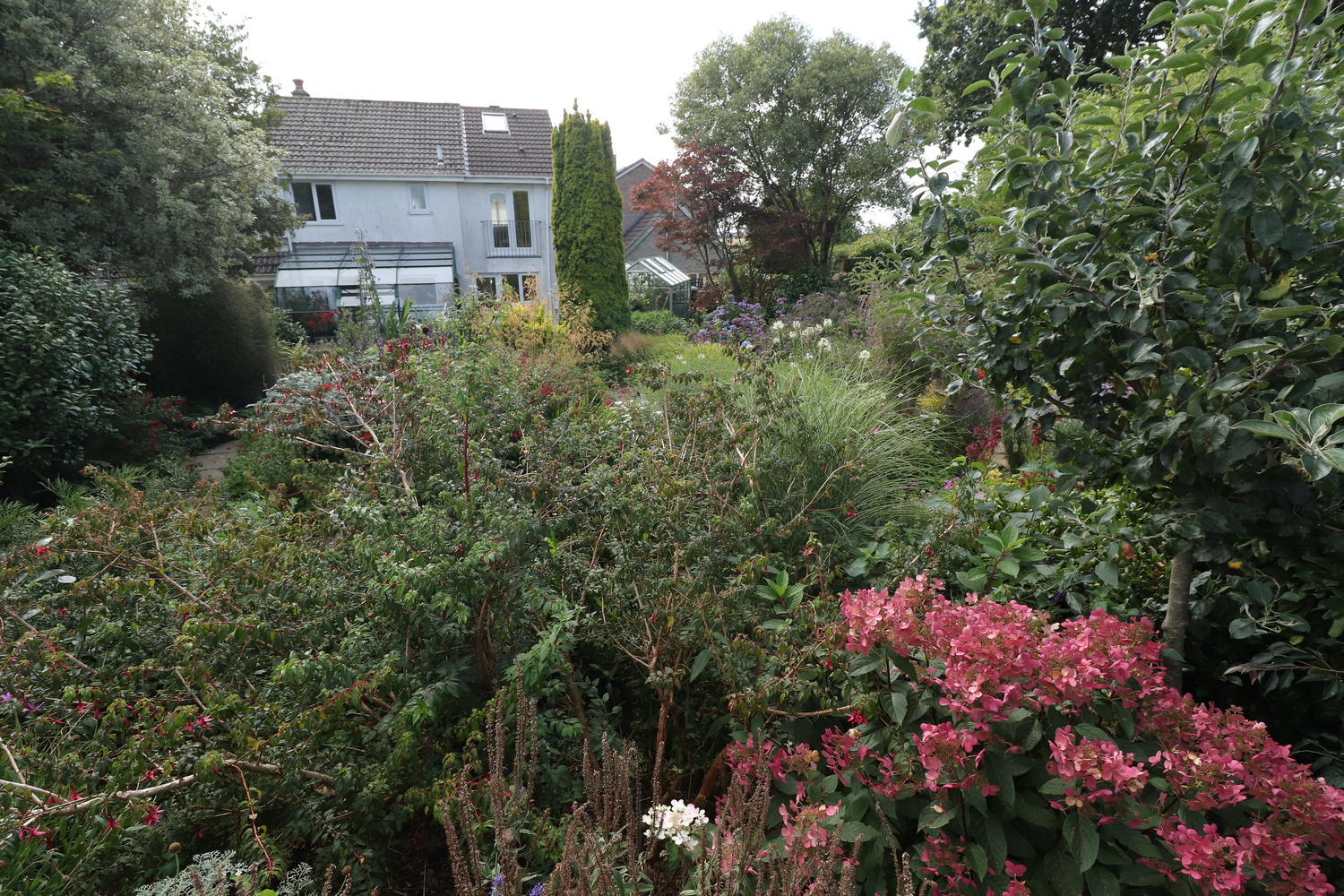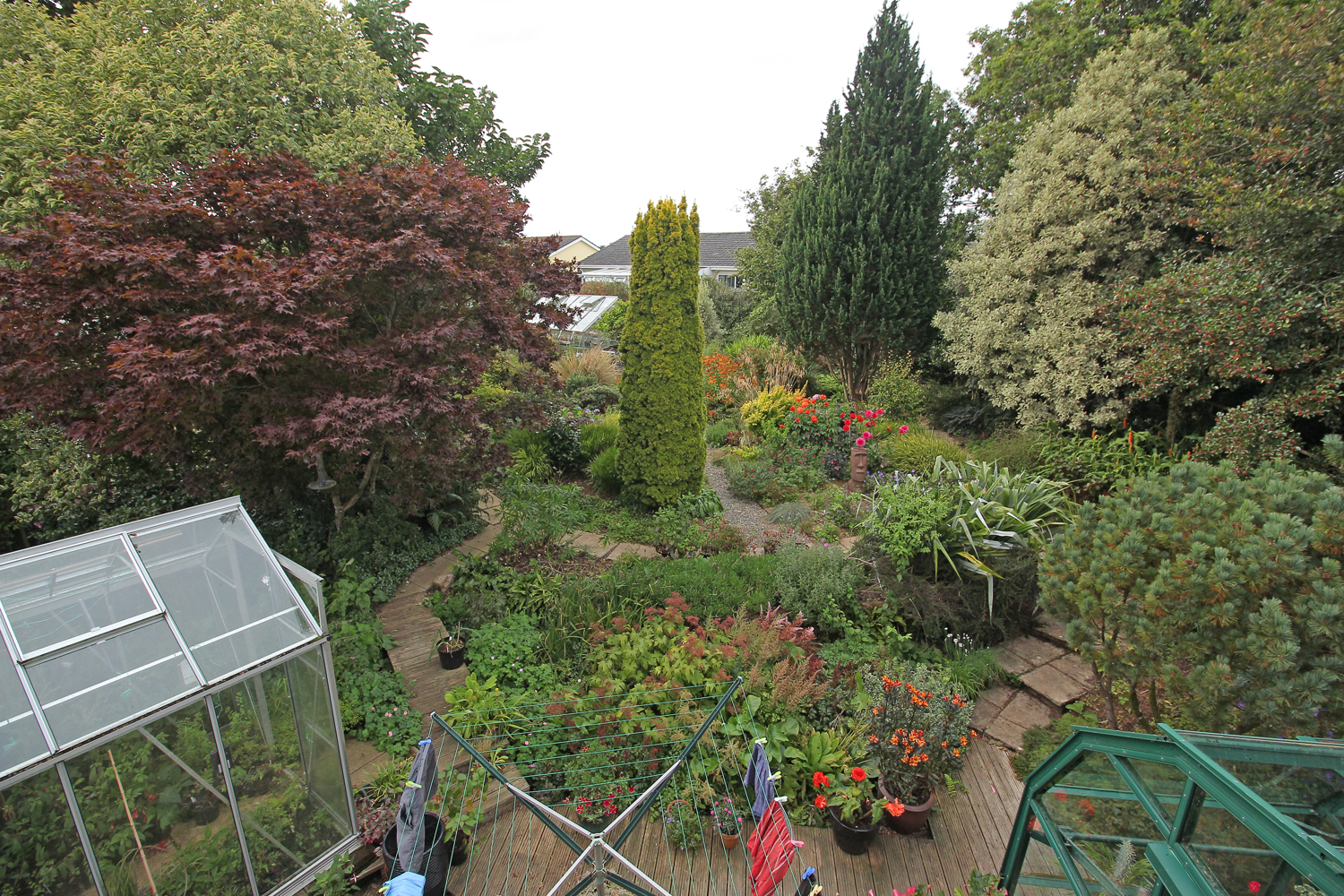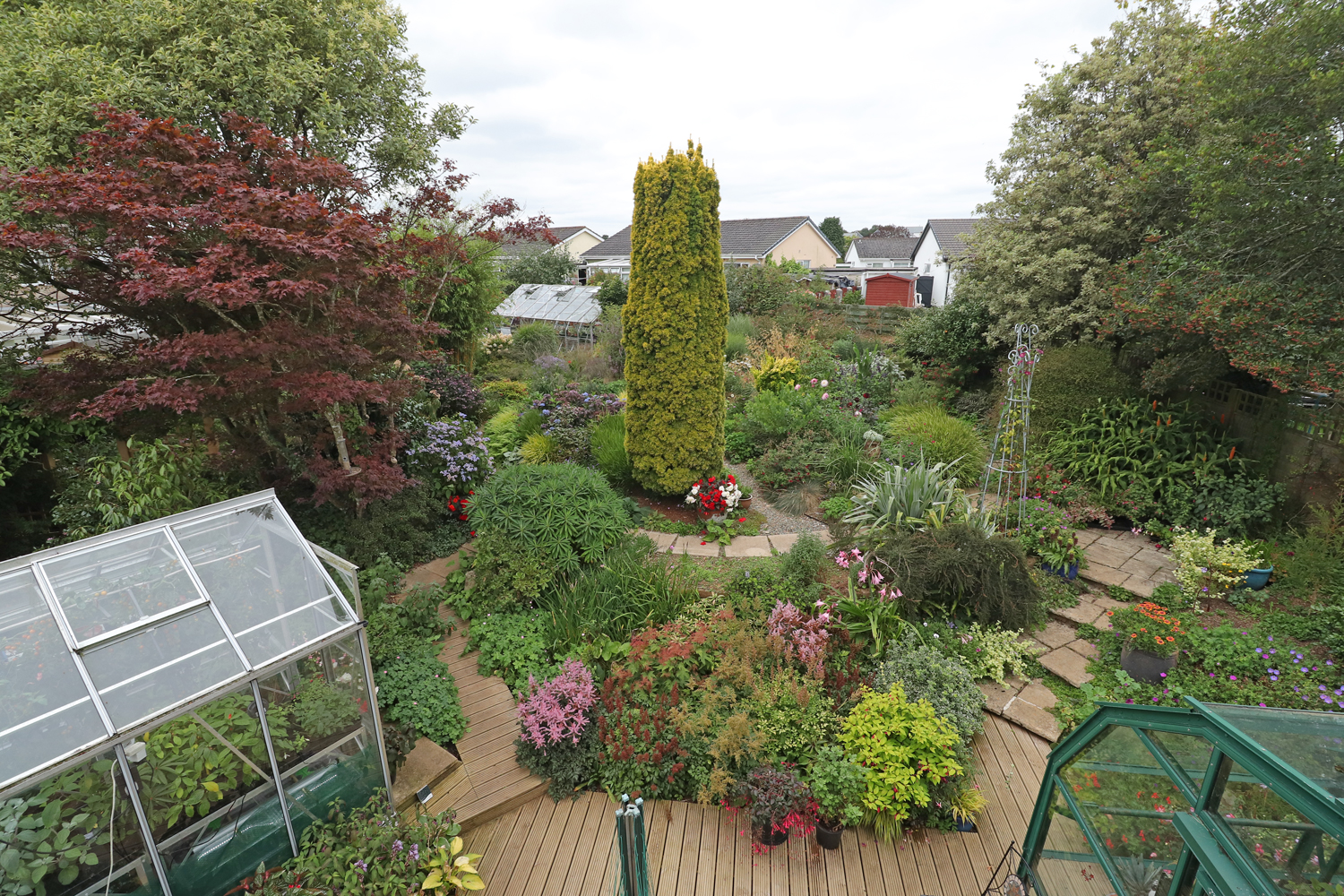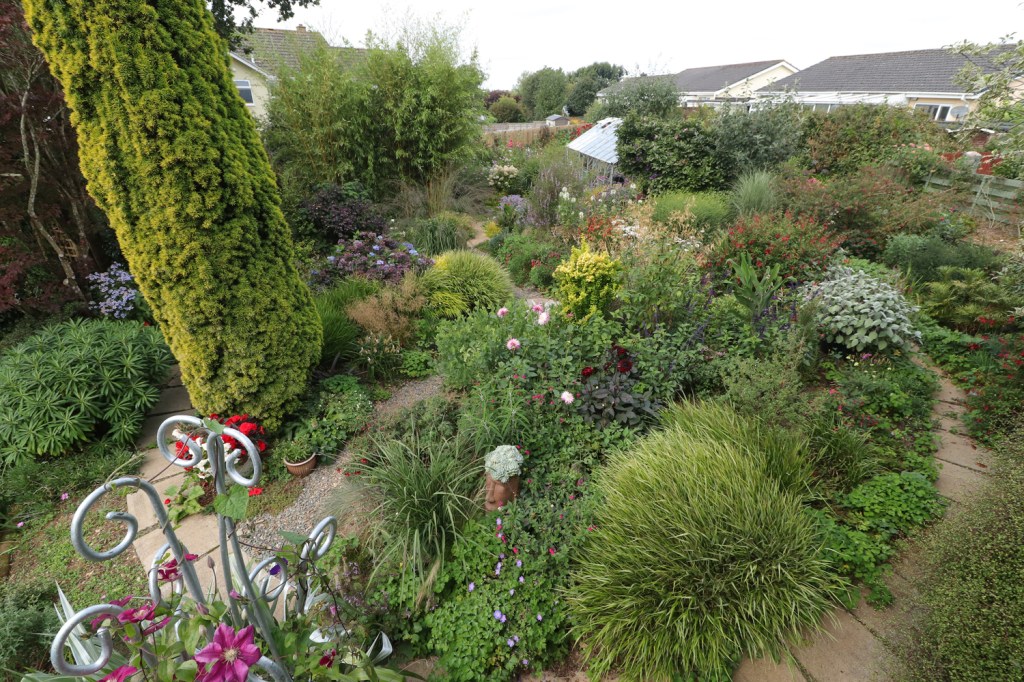It’s the end of month 8, which seems a particularly appropriate to pause momentarily and take stock of how the garden has performed this year. The growing season has all but run its course for the year, there’s now a slow run into winter, eking out the flowers by dead heading and enjoying a few very late performers. It seems particularly apposite in that we opened for the NGS for the first time this year, with our last session, of ten, last weekend.
The decision to open the garden didn’t commit us to any huge changes, it was a case of being persuaded by others that the garden was worth showing off and that it met the criteria laid down by the NGS. I was, and am, firmly of the view that it is our garden, created for and by us, catering to our tastes and for our enjoyment. In particular it is a year round garden: not a garden for a few weeks in summer.
There are lots of plants that had finished flowering long before our first visitors arrived and almost as many again that will flower in the months after the last visitors left. We opened on 10 occasions between 23 June and 22 August and our visitors certainly had plenty to see, even though they will have been aware of having just missed some things and of having come too soon for others.
Some will have been aware that they were much too late for other things; that the now ragged Polygonatums and Maianthemum must have been a sight several months ago, that the dead Allium heads must have been pretty good. They will have noted the Chrysanthemums and Hedychiums still to come. They will have had no way of knowing that there had been masses of bulbs and wood anemones and cyclamen early in the year, all traces now being hidden.And that is how it should be and how I am determined it shall remain. It’s not just about me; I see the garden as providing habitat for wildlife and the birds and the bees are not active for just two months in summer. Even the soil is healthier for supporting actively growing plants all year and for them to be as diverse as possible.
All of which rant is to say that catering to garden visitors will barely figure in my reckoning of the season so far and the things that need to be sorted out for next year.
I used to subscribe to a meme called End of Month View and took shots from the same angle at the end of each month. It predated the image compare gizmo so let’s start with one of those.


Not a great match on the images, it may in fact be better to be able to see both together.

The thing that immediately hits me is how much of what was there in 2016 has now gone.
Chamaecyparis ‘Little Spire’, top left, cut down, too big.
Schefflera taiwaniana, bottom left, cut down because dying, probably honey fungus, now affecting replacement Fuchsia.
Zingiber mioga ‘Crug Zing’, middle front, dug out, spreading fast, inconspicuous flowers.
Helenium ‘Sahin’s Early Flowerer’ and ‘Chipperfield Orange’, , above Zingiber, succumbed to eelworm.
Magnolia ‘Heaven Scent’, right of fastigiate Yew, cut down, too big, too much shade.
Chionochloa rubra, beside path and obstructing it. Dug out, replacement elsewhere.
Pittosporum ‘Elizabeth’, bottom right, fell over because of poor root system, dug out.
The things that get too big kind of creep up on you. Then one day a decision is made, the saw comes out and soon there’s a big hole to fill. Deaths can be a tragedy or can make a hard decision easy. Either way, they happen and there’s little can be done about it. It’s nevertheless a scale of turnover that goes a good way to keeping things fresh. In addition there are short lived perennials like Salvias, usually replaced by something different when their span is run, and annuals, often self sown, which come up or get planted in different places every year and when, as with foxgloves and Geranium palmatum, they are over by midsummer, they get replaced by something new each year.
Let’s look at another pairing, the view from my bedroom window. 2016 and 2021 again.


Again I’m spotting things that have gone. A couple of conifers above the glasshouse on the right, a Hydrangea behind the Yew, several branches from the purple maple. I’m also noting how big an impact the Dahlias and Heleniums were making to the right of the yew. There are still dahlias there but less bright and doing much less well this year. I’m not going to repeat the red and white Begonias next year, as well as they’ve performed. Just not right.
One last view. Up periscope and get an overview.

I want more bright colour in the foreground bed, brighter Dahlias better slug protected, move a couple of things, shrink the Hak mac clump. I’m not displeased by how it is looking now and I have no big changes planned for the next 12 months. If the past is anything to go by the unforeseen changes will outweigh the carefully planned ones. The ones I like best are the unintended but must have plant purchases that have to be shoe-horned in somewhere, often requiring a bit of vegetative musical chairs in the process. Like human musical chairs, in each round there’s an elimination. Can be a harsh business, gardening.
I enjoy these views showing the changes, Jim. I can see how far plants have come and where you’ve worked especially hard. Doing this in my own garden would help me, I’m certain.
LikeLike
I find having a lot of old pictures interesting but not especially useful, except when you notice you’ve less colour than you once had perhaps. What I do find helpful is to oik the camera up in the air and get an unfamiliar view of a very familiar scene. It both makes it easier to see the relationship of one thing to another and is as near to seeing it for the first time as I’m ever going to get.
LikeLiked by 1 person
Chamaecyparis ‘Little Spire’? It was not so little. Nor was it a Leyland cypress. Were there Leyland cypress there somewhere? It must be fun to garden like that. My gardening style is very structured and utilitarian. . . and simple and plain. It is how I like it, but it is neither so visually appealing, nor . . . interesting.
LikeLike
‘Little Spire’ was a seedling of ‘Wissellii’, a normal sized but aberrant foliaged form of Lawson Cypress. I think the raiser started selling it before it had shown its true colours, must be one of the worst misnamings I know.
LikeLiked by 1 person
African flame bush was worse. It was a hebe from New Zealand with purple flowers.
LikeLiked by 1 person
I love the Schefflera taiwaniana of 2016! And now a bit afraid of my mioga gently growing in my east border. ( inconspicuous is the word this year, first year without flowers so far)
LikeLike
I think I have a legacy of Armillaria from the leylandii hedge that once grew along the top of the garden. I’ve lost a few things over the years. I quite liked the Zingiber but Hedychiums have the same foliage and showy flowers too, so keeping it made no sense. It’s still popping up, perhaps I should grow it on my allotment as a food crop.
LikeLiked by 1 person